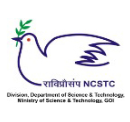Platform – Virtual (ZOOM)
Webinar ID: 851 1984 1894
Passcode: 968527
To join the webinar: CLICK HERE
Introduction
The future of our land is at stake. Desertification and drought are among the most pressing environmental challenges of our time; with up to 40% of all land area worldwide already considered degraded. Healthy land not only provides us with almost 95% of our food but so much more: it clothes and shelters us, provides jobs and livelihoods, and protects us from the worsening droughts, floods and wildfires. In fact, forecasts estimate that by 2050 droughts may affect over three-quarters of the world’s population. The number and duration of droughts has increased by 29 percent since 2000, as compared to the two previous decades (WMO 2021). When more than 2.3 billion people already face water stress, this is a huge problem. At the same time, growing populations coupled with unsustainable production and consumption patterns fuel demand for natural resources. The water cycle and land management are inextricably linked: that every land use decision is a water use decision. By 2050, 10 billion people will share our one planet – depending on healthy land for their livelihoods. Yet, every second, an equivalent of four football fields of healthy land becomes degraded, adding up to a total of 100 million hectares each year. Beyond that, desertification and drought are drivers of forced migration. Each year, tens of millions of people are at risk of displacement due to these environmental challenges. We need to avert land degradation as a root cause of conflict and instability. As the triple planetary crisis of climate change, biodiversity loss, and pollution and waste impact the health of land it is essential to halt human activities that lead to land degradation and work towards restoring land to protect livelihoods, climate, and biodiversity. Soil erosion, nutrient depletion and other forms of land degradation reduce water productivity and affect water availability, quality, and storage. Reversing these trends entails tackling the underlying social, economic, political and institutional drivers of unsustainable land use. According to the United Nations Convention to Combat Desertification (UNCCD), restoring degraded land globally could lock away three billion tonnes of atmospheric carbon into the soil every year, supporting the achievement of the 1.5° target. Land restoration is also essential to ensure human rights, sustainable development, food security, employment, disaster risk reduction, ecological benefits, and improved public health.
Objective
The Webinar will present an overarching understanding of these linkages through insights from experts on the conceptual framework, research and insights from policies by bringing together stakeholders from international and multilateral organizations, research institutions, and policy-think tanks, with the common agenda to enhance the multi-risk approaches including drought. The Webinar shall provide ways forward for the multi-risk assessment framework, and especially to the endeavours of development cooperation to reduce and manage risks in developing countries. The scope for future cooperation and collaboration will be explored.
For more information please contact-
Ms. Shweta Tyagi
Chief Functionary
India Water Foundation
Email: [email protected]
Mobile: +91 9899819074





